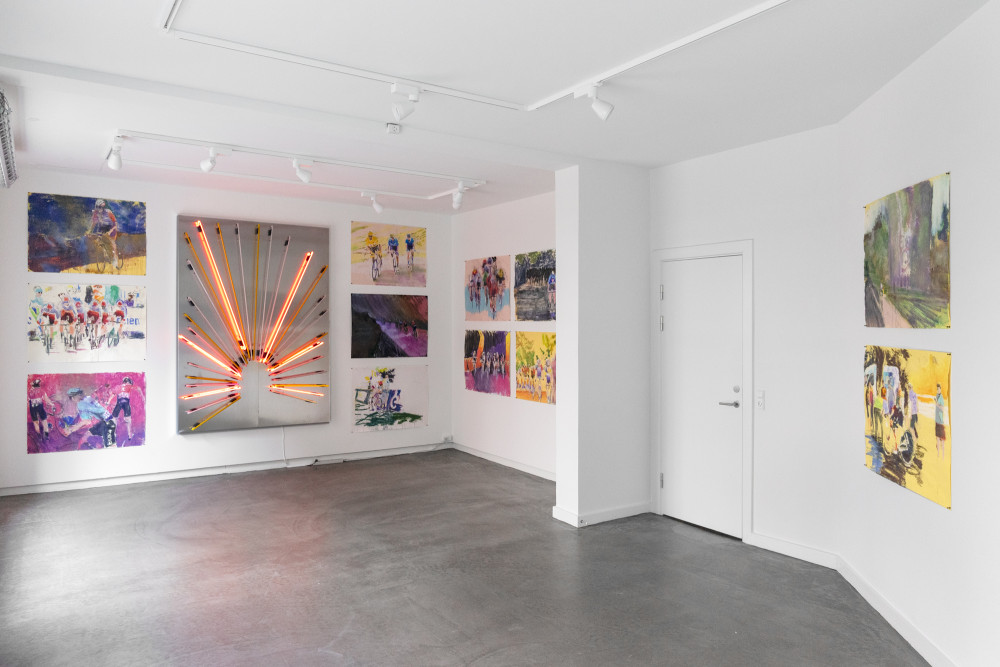When it comes to material versatility and artistic suppleness, Erik A. Frandsen is unparalleled in Danish art history. Even though in the general public, he is perhaps most readily associated with his ongoing exploration of the classic still life, which he still after more than two decades manages to rethink, the hardheaded boy from the country is also an innovative sculptor and mosaicist, a splendid photographer, and a formidable draughtsman.
In his new show, “The We-Machine”, it is Frandsen in his role as the latter, who clocks in. Over a period of three months, he has been following the international cycling calendar assiduously: First in the flesh in Italy, during the annual Giro d’Italia; then through the summer highlights of the silver screen from his far-off studio on the island of Falster.
An almost obsessive process of observation and registration has yielded more than sixty compellingly enigmatic, singular works of art. Quite contrary to what one would expect, the individual drawings are not intended as cycling studies per se, rather they are meditations on movement and propulsion; a kind of stylistic exercise or survey of a transient mythos. In “The We-Machine”, Erik A. Frandsen draws on his considerable art historical knowledge and know-how, as he brings to a halt the inherent dramaturgy of cycling in frozen moments of unwavering light and buoyancy, so that the narrative is pushed back and the otherwise anonymous surroundings are brought to the fore.
“The We-Machine” is a masterclass in the discipline of seeing all that, which the eye has a habit of omitting.











